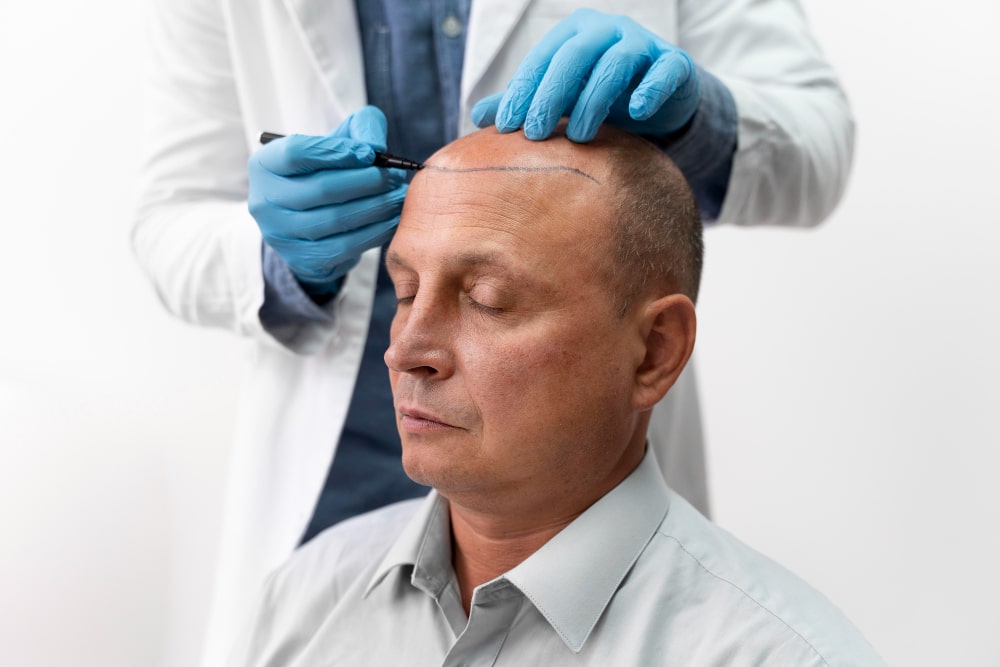Hair transplant surgery is an increasingly popular solution for individuals experiencing hair loss, offering a permanent and natural-looking way to restore hair. In Islamabad, a growing number of clinics provide advanced techniques such as Follicular Unit Extraction (FUE) and Follicular Unit Transplantation (FUT). While the procedure itself is important, proper preparation plays a crucial role in ensuring a successful outcome and smooth recovery. Understanding the steps to prepare for a hair transplant can help patients achieve the best results. Finding an effective and safe hair transplant in Islamabad can help restore both your hair and confidence.
Initial Consultation
The first step in preparing for a hair transplant is scheduling an initial consultation with a qualified surgeon. During this session, the surgeon evaluates your hair loss pattern, donor area quality, scalp health, and overall suitability for surgery.
Key aspects of the consultation include:
- Assessment of hair loss: Determining the stage and cause of hair loss helps the surgeon plan the procedure.
- Discussion of goals: Patients should communicate their expectations regarding hairline design, density, and overall coverage.
- Technique recommendation: The surgeon may recommend FUE or FUT based on your hair type, donor availability, and aesthetic goals.
- Medical evaluation: A review of medical history, allergies, medications, and pre-existing conditions ensures that the procedure is safe.
- Cost and session planning: Patients receive an estimate of the number of grafts required, procedure duration, and expected costs.
This consultation allows the patient to clarify doubts, understand the procedure, and plan for recovery.
Pre-Operative Medical Guidelines
Proper preparation involves addressing medical factors that could affect surgery and healing:
- Blood tests: Clinics may request routine blood tests to check overall health and rule out conditions that could affect healing.
- Medication adjustments: Some medications, particularly blood thinners or anti-inflammatory drugs, may need to be paused before surgery under the guidance of a doctor.
- Avoid alcohol and smoking: Both can impair blood circulation and healing, so patients are advised to avoid them for at least a week prior to the procedure.
- Address scalp issues: Any scalp infections, dandruff, or skin conditions should be treated before surgery.
Patients should provide a complete medical history to the surgeon to minimize the risk of complications during and after the procedure.
Hair and Scalp Preparation
Preparing the hair and scalp properly ensures a smoother procedure and better graft survival:
- Hair washing: Patients are usually advised to wash their hair thoroughly on the day of surgery using a mild shampoo. This removes dirt, oil, and debris from the scalp.
- Avoid hair products: Styling gels, sprays, or oils should be avoided as they can interfere with the surgical process.
- Hair length considerations: For FUE, some clinics may recommend trimming the donor area hair to facilitate extraction, while FUT generally requires longer hair in the donor strip area.
A clean and healthy scalp minimizes the risk of infection and allows the surgeon to work efficiently.
Lifestyle and Practical Preparations
In addition to medical and hair preparation, lifestyle adjustments can make the hair transplant experience more comfortable:
- Arrange transportation: Since some procedures take several hours, patients should plan transportation home. Even though local anesthesia is used, fatigue or mild discomfort may make driving difficult immediately afterward.
- Rest and sleep: Being well-rested before the procedure can help reduce stress and improve overall tolerance to surgery.
- Comfortable clothing: Loose, comfortable clothing with buttons or zippers is recommended to avoid pulling garments over the head after surgery.
- Hydration and light meals: Eating a light meal and staying hydrated before the procedure helps maintain energy levels and prevent dizziness during the surgery.
Mental Preparation
Mental readiness is equally important for a successful hair transplant:
- Set realistic expectations: Understanding that new hair growth takes several months helps patients remain patient and satisfied with gradual progress.
- Understand the recovery process: Being aware of post-operative care, potential shedding, and the timeline for new hair growth reduces anxiety.
- Stay positive: A calm and confident mindset contributes to a smoother experience and better adherence to care instructions.
Day of the Procedure
On the day of surgery, patients should follow all pre-operative instructions provided by the clinic. Arriving on time, wearing suitable clothing, and having a trusted companion for support can make the day less stressful. The surgeon will perform a final assessment of the scalp, mark the hairline design, and review anesthesia and pain management procedures before starting the surgery.
Conclusion
Preparing for a hair transplant procedure in Islamabad involves multiple steps that collectively contribute to the success of the surgery. From an initial consultation and medical evaluation to hair preparation, lifestyle adjustments, and mental readiness, each aspect ensures that the patient is fully ready for the procedure. By adhering to the surgeon’s instructions and taking proactive measures, patients can maximize graft survival, minimize complications, and achieve natural, lasting results. Proper preparation not only enhances the efficiency of the surgery but also provides peace of mind, making the hair restoration journey a smoother and more rewarding experience.




